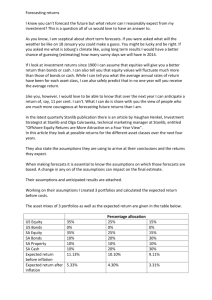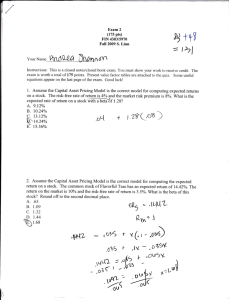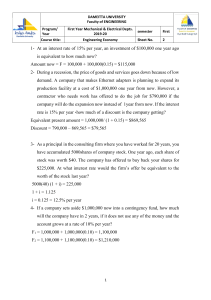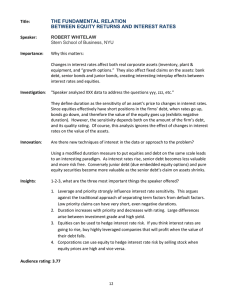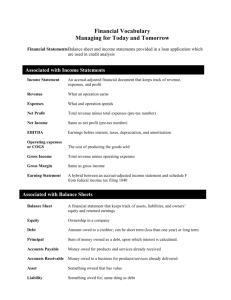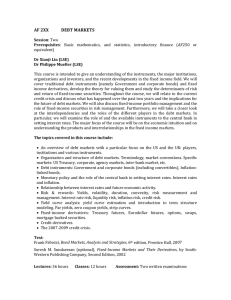Chapter 1
advertisement
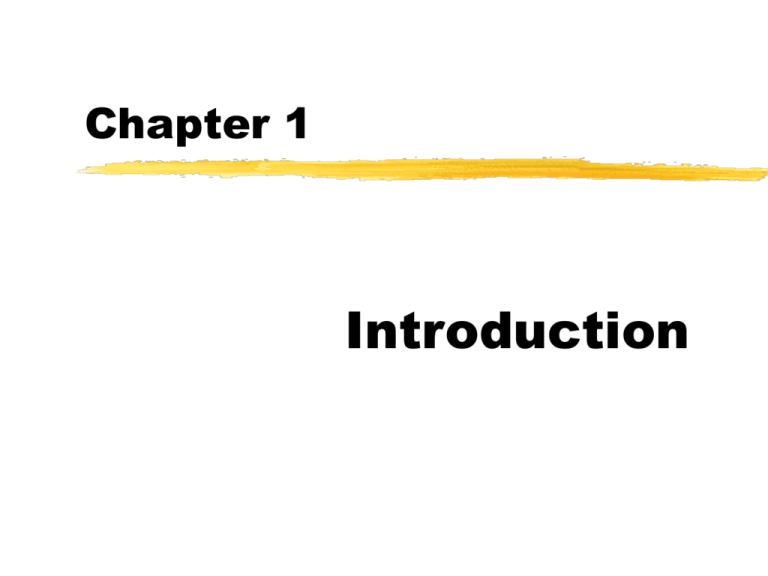
Chapter 1 Introduction Types of Assets Tangible Assets Value is based on physical properties Examples include buildings, land, machinery Intangible Assets Claim to future income Examples include various types of financial assets Types of Financial Assets Bank loans Common stock Government bonds Preferred stock Corporate bonds Foreign stock Municipal bonds Foreign bond Debt vs. Equity Debt Instruments Fixed dollar payments Examples include loans, bonds Equity Claims Dollar payment is based on earnings Residual claims Examples include common stock, partnership share Price of Financial Asset and Risk The price or value of a financial asset is equal to the present value of all expected future cash flows. Expected rate of return Risk of expected cash flow Types of Investment Risks Purchasing power risk or inflation risk Default or credit risk Exchange rate or currency risk Role of Financial Assets Transfer funds from surplus units to deficit units. Transfer funds so as to redistribute unavoidable risk associated with cash flows generated from both tangible and intangible assets. Role of Financial Markets Determine price or required rate of return of asset. Provide liquidity. Reduce transactions costs, which consists of search costs and information costs. Classification of Financial Markets Debt vs. equity markets Money market vs. capital market Primary vs. secondary market Cash or spot vs. derivatives market Auction vs. over-the-counter vs. intermediated market Financial Market Participants Households Business units Federal, state, and local governments Government agencies Supranationals Regulators Globalization of Financial Markets Deregulation or liberalization of financial markets Technological advances Increased institutionalization Classification of Global Financial Markets Internal Market (also called national market) Domestic Market External Market (also called international market, offshore market, and Euromarket) Foreign Market Motivation for Using Foreign Markets and Euromarkets Limited fund availability in internal market Reduced cost of funds Diversifying funding sources Derivatives Market Futures/forward contracts are obligations that must be fulfilled at maturity. Options contracts are rights, not obligations, to either buy (call) or sell (put the underlying financial instrument. Role of Derivative Instruments Protect against different types of investment risks, such as purchasing power risk, interest rate risk, exchange rate risk. Advantages: Lower transactions costs Faster to carry out transaction Greater liquidity


